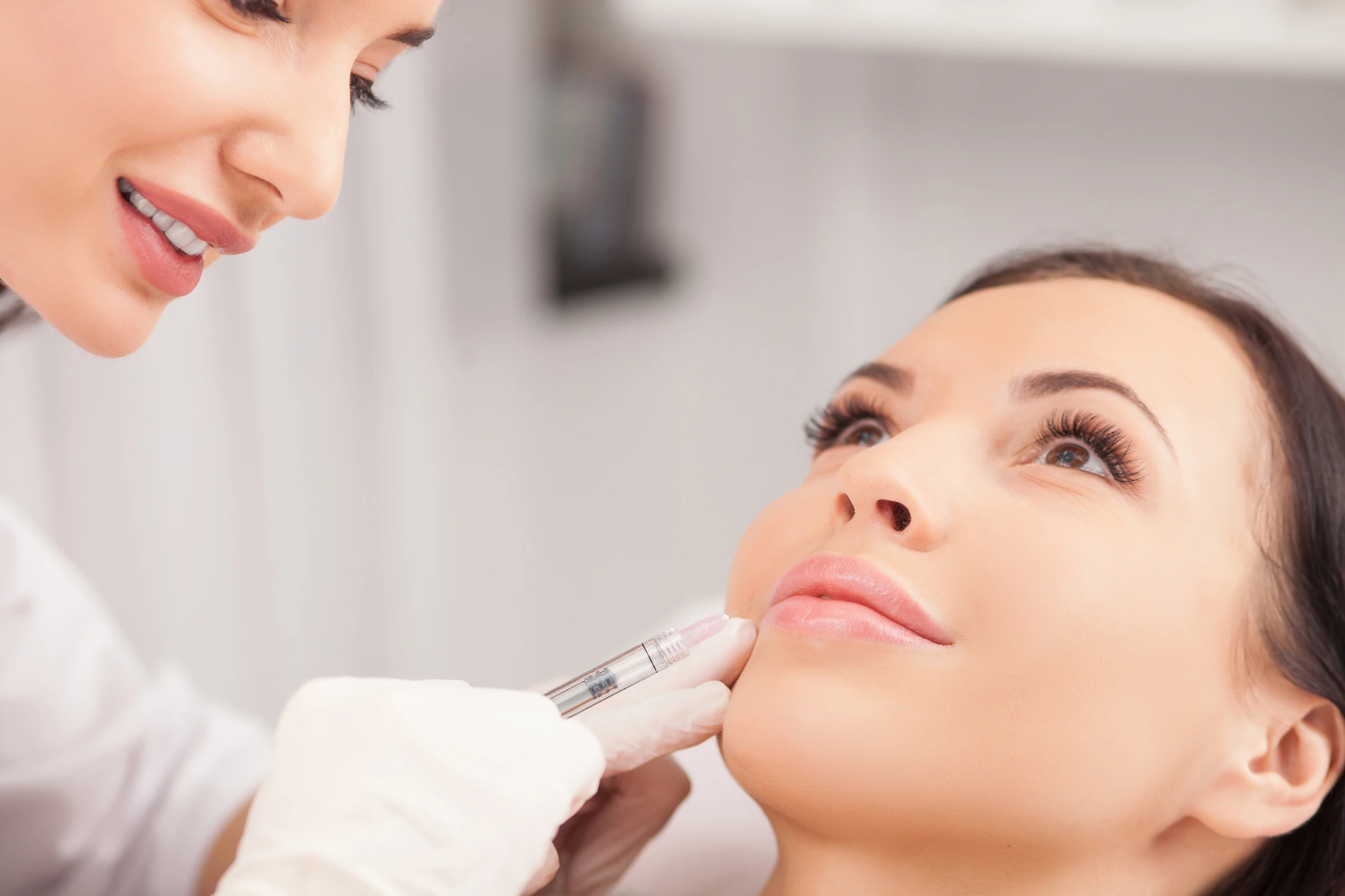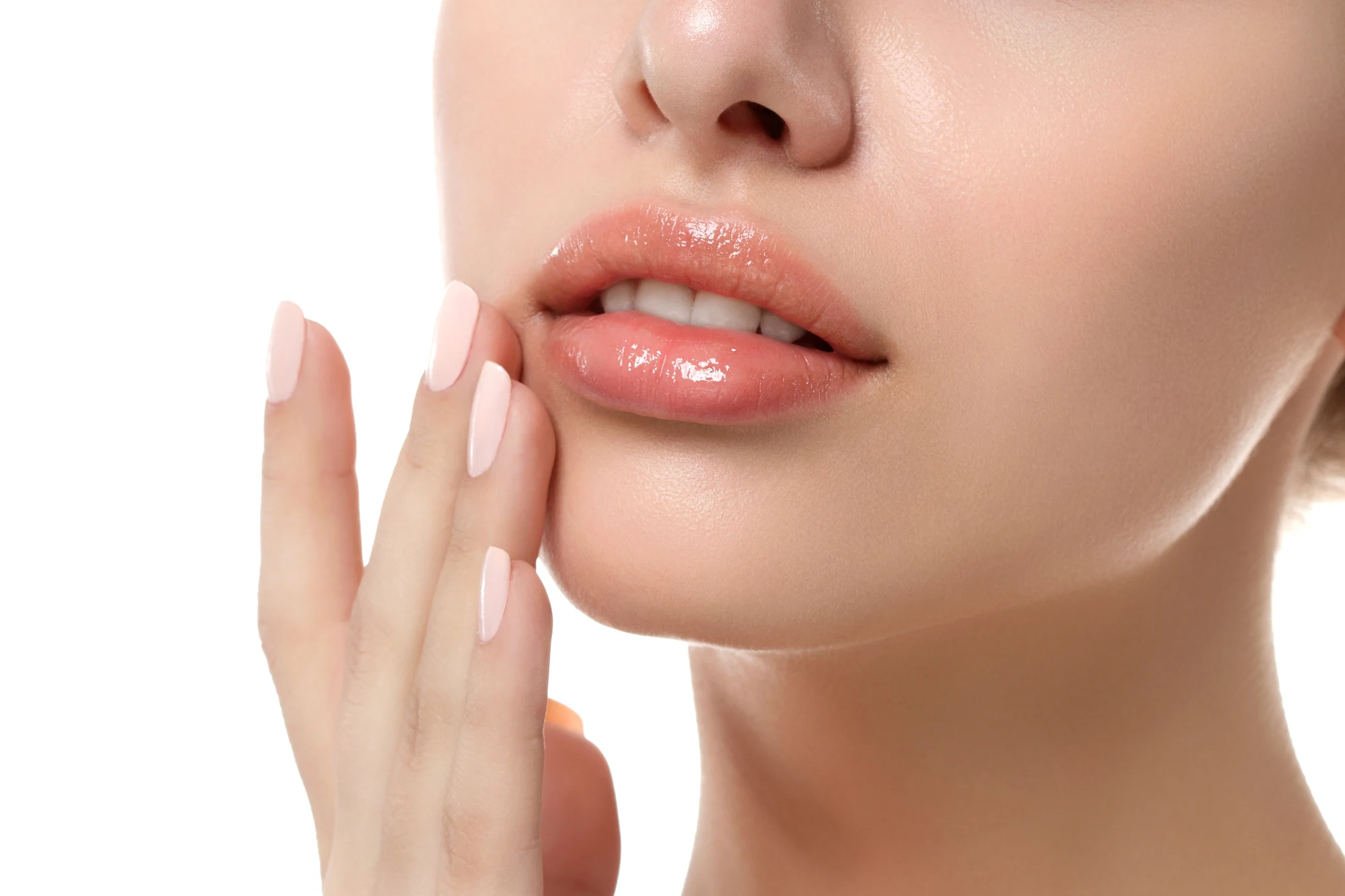SHARE THIS ARTICLE

Botulinum Toxins
How to Apply BOTOX® in Mouth Area
Mar 14, 2024
BoNT injectables are the most sought-after medical aesthetic procedures, so much so that among patients, any botulinum toxin is commonly referred to as BOTOX®, after the brand name that has marketed it most successfully.
BoNT products are usually used to smooth wrinkles and fine lines in the upper face. They do great in facial sculpting procedures. When it comes to aesthetic and functional solutions concerning the mouth area, BOTOX® in the mouth can help dental and other medical patients correct not only aesthetic concerns but also those more functional, offering relief for various dental conditions, TMJ pain, and even in cases of excessive drooling.
A study focused on the Botulinum toxin applications in the lower face and neck states that “BNT injection has been widely used for the treatment of different medical and cosmetic purposes. Low rates of side effects, which were self-limited in most cases, have been reported in the literature, making BNT a safe therapeutic medication in most cases.’’
With multiple evidence showing the success of BoNT treatments, BOTOX® in the mouth area is not to be disregarded but explored and used in circumstances that allow for your patients to enjoy its long-term effects.
Key Takeaways
- BoNT injectables are the most common medical aesthetic procedures, offering a long-term solution to different concerns.
- BOTOX® in-the-mouth treatments can offer relief in various cases of muscle spasms, helping patients with physical and dental issues.
- Indications for the use of BoNT in the mouth include excessive contraction of muscles or hyperactivity of specific facial muscles.
- BOTOX® injections need to be administered by experienced professionals with a deep understanding of human anatomy and a precise hand.
- There are BoNT brands designed for use in the mouth, while others can be used in specially prepared doses.
Indications for BOTOX® In the Oral Area
BOTOX® for wrinkles around the mouth is one of the most common indications for using BoNT injectables in this sensitive area, yet there are many other reasons to make your patients suitable for injections in the mouth area. In recent years, BOTOX® for lip flip became more sought-after aesthetic procedure, but the list doesn’t stop there.
The Narrative Review of Esthetic Techniques writes about the following indications for BOTOX® around the mouth: “Excessive contraction of muscles or hyperactivity of specific muscles such as bulky masseters, cobblestone chins, gummy smiles, asymmetric smiles, and depressed mouth corners can achieve esthetic results by targeting the precise muscles.’’
Mouth BOTOX® Injection Techniques
Low doses of BoNT are always recommended when administering BOTOX® in the mouth areas. The diffusion of the solution depends on different factors, but a general recommendation is to use 1-5 mL of saline with 100 U of BoNTA. Another piece of advice by professionals is to prepare oneself by using good lighting, marking the future areas of injections, and taking photographic evidence before and after the procedure to make sure you are as precise and as professional as possible.
Following the guidance from the already mentioned Narrative Review of Esthetic Techniques, the following represent a recommendation for BOTOX® injections in lips and the mouth area in the following cases:
- Cobblestone Chin Treatment: A pebbled or dimpled appearance of the chin can be treated with two injections, totaling 10 U into the mentalis muscle.’
- Perioral Rhytides: The procedure for this, also known as smoker’s lines BOTOX®, requires the patient to contract the lips. Depending on anatomy, intracutaneous and intradermal injections can be administered. In total, 2–3 units of BoNT should be injected along the vermilion border.
- Gummy Smile: Gummy smile is defined as an excessive gingival display greater than 3 mm when smiling. Treatment consists of a single-point injection of 2 units on each side, 1 cm lateral to the nostril ala, also known as the Yonsei point. Injection can target three muscles: LLSAN, LLS, ZMi.
- Drooping Oral Commissures: The procedure for drooping oral commissures, also known as BOTOX® for DAO, is recommended to be administered as follows: subdermally or intradermally 4 units to 10 units of BoNT, 1 cm lateral and lower to the mouth corner.
All of the following injection techniques are required to be administered by experienced professionals with detailed knowledge of anatomy who work with great precision to minimize any possibility of asymmetry or further issues with muscular functionality. Also, aestheticians should ensure that their patients are fully aware of the possible side effects and the reality of their expectations.

Mouth BOTOX® Side Effects
Various BOTOX® side effects can occur during or after the treatment with BoNT. The most serious one is a possible allergic reaction, so it’s crucial to deeply understand the patient’s previous medical history.
Other side effects of BOTOX® in the mouth include:
- Redness, itchiness, and pain at the site of injection
- Swelling and bruising
- Other skin reactions
- Asymmetric features
- Rare cases of infection
To ensure the above side effects are minimized, the medical professional administering the injections should have vast experience in the field.
Recommended BoNT Brands for Use in the Oral Area
There are several FDA-approved BoNTs (obabotuli-numtoxinA, abobotulinumtoxinA, incobotulinumtoxinA, letibotulinumtoxinA, prabotulinumtox-inA, daxibotulinumtoxinA, rimbotulinumtoxinB) and novel BoNTs on the market.
Some of the most popular BoNTs are:
- BOTOX® COSMETIC: Original BOTOX® COSMETIC offers different product variants that can be used on sensitive facial areas.
- BOCOUTURE®: Universal BoNT intended for intramuscular injection.
- AZZALURE®: A local muscle relaxant, with purified BoNT.
- NABOTA®: Designed to reduce expression lines, a highly purified BoNT.
While you can’t go wrong with classic BOTOX®, you can explore other brands that better suit your patient’s needs.
Conclusion
The application of BoNT in the oral area is commonly performed by medical professionals of all categories, including physicians and dentists. BOTOX® can ease and target various functional difficulties in the mouth and help with facial aesthetic features, boosting confidence in patients with the right indications.
With a professional approach and safe and genuine products sourced from reliable sellers like Maylips, you can expect your clients to enjoy the long-term effects of these injectable treatments.
FAQ
Can you put BOTOX® in your mouth?
Yes, medical professionals can use BoNT injectable solution on and around the mouth area to help with various aesthetic and functional issues.
What does BOTOX® in the corners of the mouth do?
BOTOX® can be used to treat downturned mouth corners. It works by helping the muscle gain back its elasticity and volume, lifting the corners of the mouth.
Is there oral BOTOX®?
There are BoNT brands designed for oral use.
Is BOTOX® in lips safe?
BOTOX® in lips is a perfectly safe solution when administered professionally to a patient with no prior contraindications. BOTOX® for lip flip is among the commonly requested aesthetic procedures.
Where not to place BOTOX®?
BOTOX® can be placed in any muscular tissue, depending on the patient’s indications.
How long does BOTOX® last in the mouth?
The duration of the effect of BOTOX® depends on many factors, with the expectation of its effects lasting up to six months.
Will jaw BOTOX® change my smile?
When administered properly, BOTOX® should not affect a patient’s smile.
Does BOTOX® around the mouth change your smile?
BOTOX® around the mouth can change a patient’s smile, depending on the dosage and the desired effect.
How much BOTOX® for the mouth?
Depending on the treatment itself, the recommendation is to use 1-5 mL of saline with 100 U of BoNTA and to administer the dose gradually, depending on the procedure.
References
Matilde M, Spósito M. New Indications for Botulinum Toxin Type A in Cosmetics: Mouth and Neck. Plastic and Reconstructive Surgery. 2002;110(2):601. Accessed March 9, 2024. https://journals.lww.com/plasreconsurg/Abstract/2002/08000/New_Indications_for_Botulinum_Toxin_Type_A_in.37.aspx
Hong SO. Cosmetic Treatment Using Botulinum Toxin in the Oral and Maxillofacial Area: A Narrative Review of Esthetic Techniques. Toxins. 2023;15(2):82. doi:https://doi.org/10.3390/toxins15020082
Goldman A, Wollina U. Elevation of the corner of the mouth using Botulinum toxin type A. Journal of Cutaneous and Aesthetic Surgery. 2010;3(3):145. doi:https://doi.org/10.4103/0974-2077.74490
Fietzek UM, Kossmehl P, Barthels A, Ebersbach G, Zynda B, Wissel J. Botulinum toxin B increases mouth opening in patients with spastic trismus. European Journal of Neurology. 2009;16(12):1299-1304. doi:https://doi.org/10.1111/j.1468-1331.2009.02723.x
Kassir M, Mahsa Babaei, Saba Hasanzadeh, Mostafa Rezaei Tavirani, Zahra Razzaghi, Robati RM. Botulinium toxin applications in the lower face and neck: A comprehensive review. Journal of Cosmetic Dermatology. Published online December 7, 2023. doi:https://doi.org/10.1111/jocd.16116

